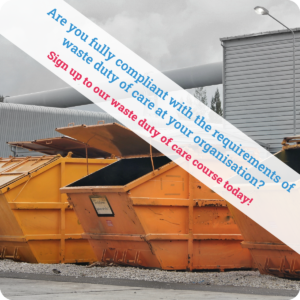Starting with this month, certain producers must collect and report data on the packaging they produce in accordance with new data reporting Regulations. This will help calculate the Extended Producer Responsibility (EPR) fee that they will have to start paying from 2024. The Compliance People consultant Anca Alexa looks at this important change.
As the name suggests, the EPR is a new environmental policy that extends a producer’s responsibility to the post-consumer stage of their product’s life cycle. From 2024, producers must take responsibility for the environmental impact of the packaging they produce by paying for its collection and disposal once it becomes waste.
The data reporting Regulations will help calculate those fees. The following Regulations came into force on 28th February 2023 (Wales is expected to follow suit later this month).
- The Packaging Waste (Data Reporting) (England) Regulations 2023
- The Packaging Waste (Data Reporting) (Scotland) Regulations 2023
- The Packaging Waste (Data Reporting) Regulations (Northern Ireland) 2023
The EPR defines packaging as any material that is used to cover or protect goods sold to consumers, including anything designed to be filled at the point of sale (e.g. coffee cups). However, there are some exceptions as outlined below.
Exempt packaging
The following types of packaging are exempt from the EPR requirements.
- Reused primary packaging (packaging that is in direct contact with the product itself, e.g. wine bottles).
- Production residues from the production of packaging.
- Packaging exported from the UK (except to a marine installation).
- Reused secondary or tertiary packaging (except packaging imported into the UK).
- Packaging regulated under The Deposit and Return Scheme for Scotland Regulations 2020, e.g. cans of drinks.
For the purposes of the EPR, a producer is any organisation operating in the UK as:
- a brand owner;
- a packer / filler;
- an importer;
- a distributor;
- an online marketplace operator;
- a service provider; or
- a seller.
An organisation will be classed as a small producer if either:
- its annual turnover is between £1 million and £2 million, and it is responsible for handling and suppling more than 25 tonnes of empty packaging or packaged goods through the UK market; or
- its annual turnover is over £1 million, and it is responsible for handling and supplying between 25 and 50 tonnes of empty packaging or packaged goods through the UK market.
An organisation will be classed as a large producer if:
- its annual turnover is £2 million or more; and
- it is responsible for handling and supplying more than 50 tonnes of empty packaging or packaged goods in the UK per year.
Collecting and reporting data
In a nutshell, the main requirements for producers under the new ‘data reporting’ Regulations are to:
- collect data on the amount and type of empty packaging and packaged goods they handle and supply in the UK from March 2023 (or from January 2023 if possible); and
- report the collected data.
The data will be used to calculate the Extended Producer Responsibility (EPR) fee that producers will start paying next year.
When to report the data
This depends on whether your organisation is a small or large producer.
Small producers will need to report their data between January and April 2024.
Large producers will need to report their data every 6 months as follows.
- For the period January to June 2023, the data must be reported between July and October 2023.
- For the period July to December 2023, the data must be reported between January and April 2024.
These are the key takeaways for now. To find out more about the EPR, please check the data reporting Regulations entry applicable to your jurisdiction on our Legislation Update Service. There you will also find links to detailed guidance from the government to help you better understand the new requirements.
